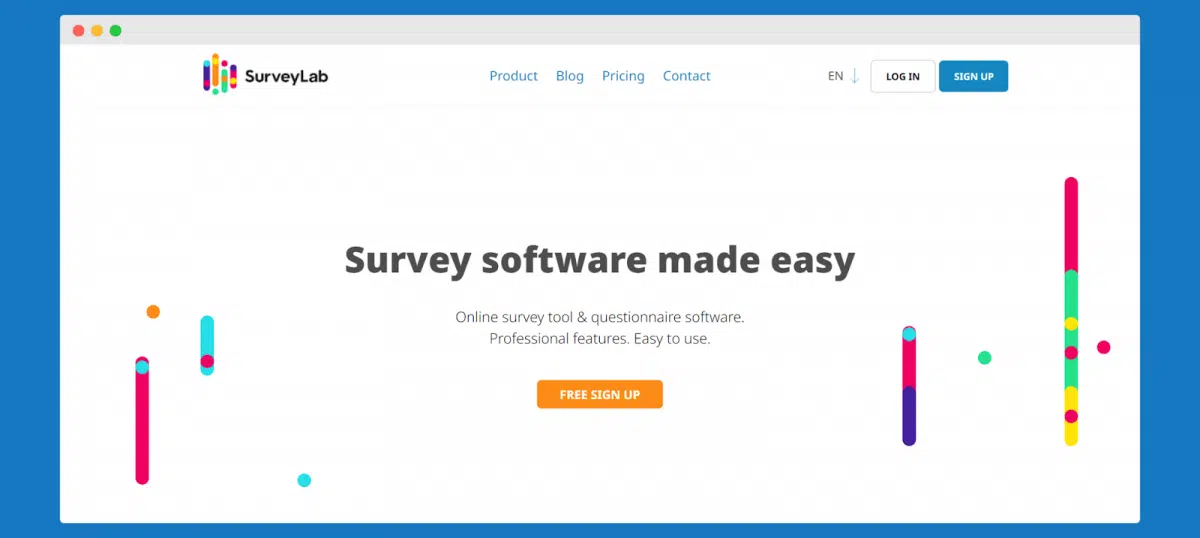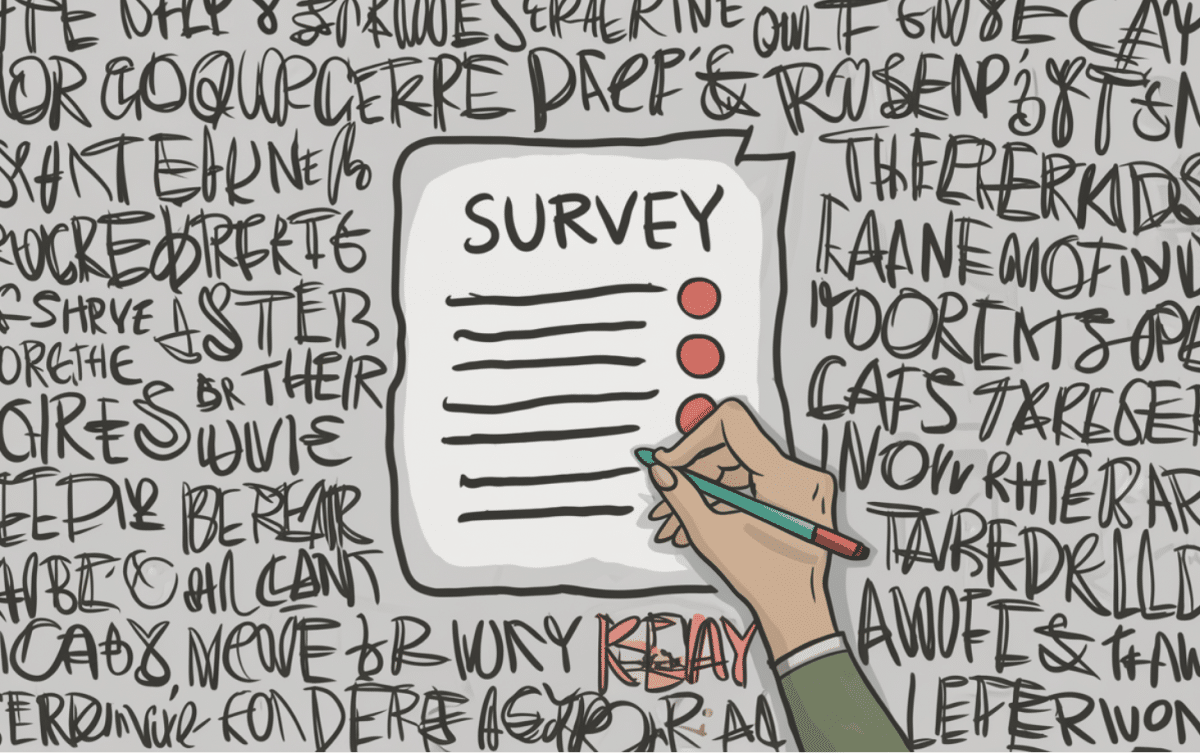Feedback is a necessity in every field, and education is no exception. One of the best tools for collecting valuable feedback here is a student perception survey.
It helps educators understand what works and what needs some tweaks in their teaching and learning environment.
How? We’re explaining it below. 👇
What is a student perception survey?
A student perception survey lets educators get to know what students think and feel about their learning environment.
Teachers use student surveys to gather feedback directly from the learners. The feedback shapes educational strategies and may change/boost classroom dynamics when used right.
Regular surveys allow schools to monitor student attitudes and adjust their teaching methods to better address student concerns and interests.

Who uses student perception surveys?
It is used at schools, universities, and educational institutions.
👉 Teachers
For teachers, it is a direct line to their students’ thoughts and feelings about the classroom experience.
When a teacher introduces a new method of examination or revision, a student perception survey might be a helpful tool for collecting actionable feedback. The results of the survey are great indicators of what to fix and adjust to the current curriculum.
👉 Educational institutions
Student perception surveys help institutions improve classroom management in schools like primary and middle school.
In primary school, the insights from the surveys can help teachers make classes more engaging. In middle school, the feedback helps adjust teaching methods to better support older students as they develop more complex skills.
The surveys capture students’ perceptions, giving valuable feedback not only on teaching styles but also on how the whole institution works. They are also an excellent guide for higher education, such as college, school leadership, and more. Integrating survey data into school management software can help administrators make informed decisions and track improvements over time.
Benefits of student surveys
Since we’ve talked about the basics, we can now look at how a student perception survey benefits teaching.
Feedback helps educators fine-tune their teaching methods
Educators receive clear insights that can be used to better their instructional practice. For someone seeking effective teaching, a student perception survey is something to add to the teaching strategies as a compulsory point.
Teachers can make necessary adjustments based on student feedback. Such targeted enhancements ensure that teaching methods meet students’ learning needs and preferences.
Surveys show what engages students
When a teacher notices a decrease in student engagement during classes, a student survey is a good way to find out what’s going on.
The surveys provide educators with real-time feedback on what captivates students and holds their interest during lessons. Teachers can refine instructional practices to better match student interests and learning styles.
Armed with this knowledge, teachers can craft lessons that educate and engage. They also know whether everyone in class feels involved and invested in their learning journey.

Students provide immediate and specific feedback
Teachers are designing the survey, so they can create as specific questions as they need. They can include both open and closed-ended questions, as well as mix it up with some other types.
And when conducting a student survey online, they get the answers right away.
📚 Read more: Types of Poll Questions You Can Ask
Insights guide teachers in teaching practices that work
New insights from student perceptions powerfully shape the classroom. When teachers interpret this feedback, they pinpoint which teaching practices succeed.
This knowledge lets them adjust in real time, and may dramatically improve student outcomes.
With a direct line to student feedback, teachers tailor their strategies to boost engagement and effectiveness, so that every student benefits from lessons that truly resonate.
📚 Read more: The Essence of Feedback Loop: A Fundamental Overview.
Feedback highlights classroom dynamics needing change
Survey results often reveal a gap between teacher perceptions and what most students experience daily.
This direct feedback alerts teachers to areas where they can improve interactions and instructional methods. Educators ensure that classrooms evolve in an effective and supportive way for most students. All thanks to the survey results.
Surveys aid in teacher professional development
Surveys deliver findings that help teachers sharpen their skills. They are a guide for educators to improve instructional practice and upgrade their teaching techniques.
For example, after running a student perception survey, the results reveal that most students prefer interactive, hands-on activities over traditional lectures. So teachers seek more fun, engaging elements and routines to implement them during classes.
Teaching practice remains cutting-edge and effective, allowing educators to make each lesson more beneficial for students.
Surveylab: creating and analyzing surveys
Educators can use traditional methods, such as line pen and paper, to gather a student perception survey, but there are faster and more effective ways of collecting data.
One of them is using a survey tool like SurveyLab.

SurveyLab is a powerful online tool that helps school leaders create surveys, tests, quizzes and more. It’s a platform for designing survey instruments that gather valid and reliable measure of how students perceive their learning environment.
With SurveyLab, educators can easily create customized questions to learn more about student perceptions and pinpoint exactly what students think and feel.
SurveyLab’s strong suits:
- Custom survey design allows you to craft surveys that are fun to fill out and match your unique style.
- Mobile optimization ensures your surveys work well on any device, reaching students wherever they are.
- Advanced analytics turn your survey data into clear insights and help you understand student feedback and make smart changes.
- Question logic adjusts questions based on previous answers.
- Real-time results let you see feedback as it comes in, so you can quickly react to students’ needs.
- Excellent customer service is ready to help with any questions or issues you might encounter.
SurveyLab supports several languages, making it easy for students from various backgrounds to participate.
With flexible pricing, including a free plan and trial, SurveyLab is accessible to schools of all sizes. Ready to get a better understanding of your students and improve your teaching strategies?
Try SurveyLab today and see the difference it can make in your school.
Designing effective student perception surveys: Step by step
Is creating a student perception survey ahead of you? Follow our guide!
Define the goals
When designing effective student perception surveys, the first step is to define the goals.
What do you want to learn from the survey?
Setting clear goals helps ensure that the questions you ask directly relate to what you need to understand.
For instance, you might want to get a comprehensive picture of how students feel about the teaching methods used throughout the school year. Maybe you’re interested in finding out how students perceive the support they receive from their teachers.
The goal-setting process may guide you to create questions that provide you with valuable information you need.

Pick the right tool
The tool you choose should make it easy for you to gather detailed feedback about the student experience directly from the classroom setting.
Select a survey platform that supports both multiple-choice and open-ended responses. A mix like this allows students to provide precise answers and also share their thoughts in their own words.
SurveyLab comes with features that enhance the way you collect and analyze students’ perceptions. It allows for the customization of questions to suit the specific aspects of the student experience you wish to explore.
On top of that, its user-friendly interface makes it easy to navigate the survey without technical difficulties.
Select the right questions
The questions you choose will directly impact the quality of feedback you receive. It’s important to ask questions that are clear, direct, and relevant to the specific areas you want to explore about the students’ experience.
SurveyLab can be a great asset here because it has a wide range of question types. You can build your survey in a way to gather both quantitative data through multiple-choice questions and qualitative insights through open-ended responses. Capture a broad spectrum of students’ perceptions, from straightforward ratings to detailed descriptions of their experiences.
Protect privacy
Information that students share must be confidential and secure. Privacy protection is essential to build trust with your respondents – students need to feel safe to provide honest feedback without fear of negative consequences.
SurveyLab takes privacy seriously and makes sure responses are anonymous. Students can then express their true thoughts, which is key to gathering accurate and useful feedback.
Keep it simple
Use clear and concise language. Simple questions ensure that all students, regardless of their age or academic level, can understand what you’re asking and provide accurate responses.
SurveyLab can help you achieve simplicity with its easy-to-use interface and straightforward question formats. A simple survey also takes less time to complete, which respects your students’ time and increases their willingness to participate.
Test the survey
Before you send it out to everyone, you need to make sure it works as intended. Testing helps catch any issues with the questions, such as unclear wording or technical problems that might confuse the students or skew the results.
You can start by having a small group of students taking the survey. Watch how they interact with it and ask for their feedback on the clarity and ease of the questions.

Run it regularly
Not something necessary, but worth doing. If you conduct surveys often, you create a constant line of communication between you and your students. It’s an ongoing conversation that lets you stay tuned to their needs and quickly handle any new issues that come up.
Also, when students know you regularly seek their opinions, they may feel more involved and valued by you.
Conclusion
A student perception survey is a powerful tool for teachers who want to keep improving. Conducting a survey can be a turning point, if done with the right tool.
SurveyLab makes it easy to create, run, and analyze surveys so you get the feedback you need to make your teaching even better.
Want to take your teaching to the next level? Try SurveyLab today and see how simple and effective student feedback changes the way you teach.
FAQ on student perception survey
Got questions? We’ve got answers!
What is a student perception survey?
A student perception survey is a tool that teachers use to find out what students think about their learning environment. It helps teachers understand students’ feelings and thoughts about the classroom.
Who should use student perception surveys?
Student perception surveys are useful for teachers and educational institutions like schools and universities. Teachers get direct feedback from students about the classroom experience, and educational institutions use these surveys to improve how they manage classes and support student learning.
What should you consider when creating a student perception survey?
When creating a student perception survey, start by defining your goals. Decide what you want to learn from the students’ feedback. Choose a survey tool like SurveyLab, which lets you customize questions and makes it easy to collect responses. Make sure your questions are clear and cover the topics you need feedback on.
